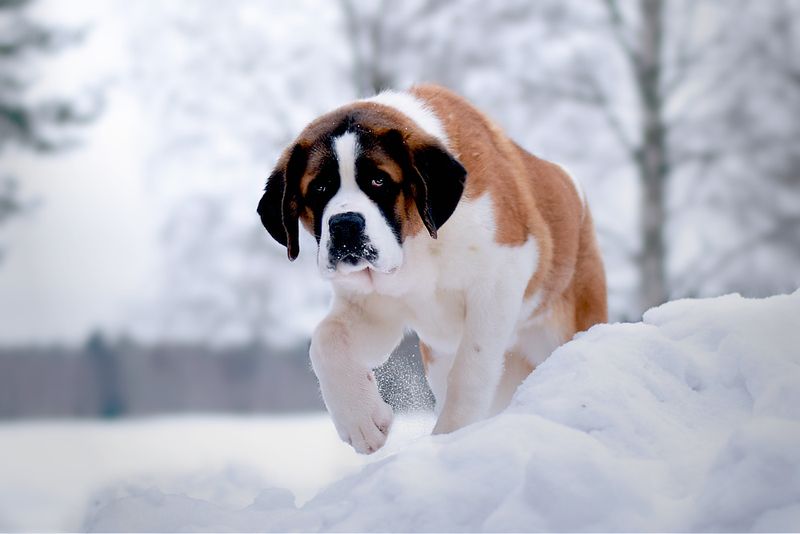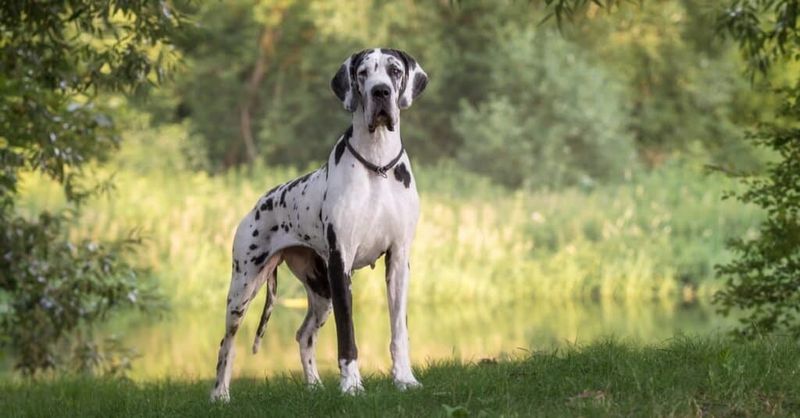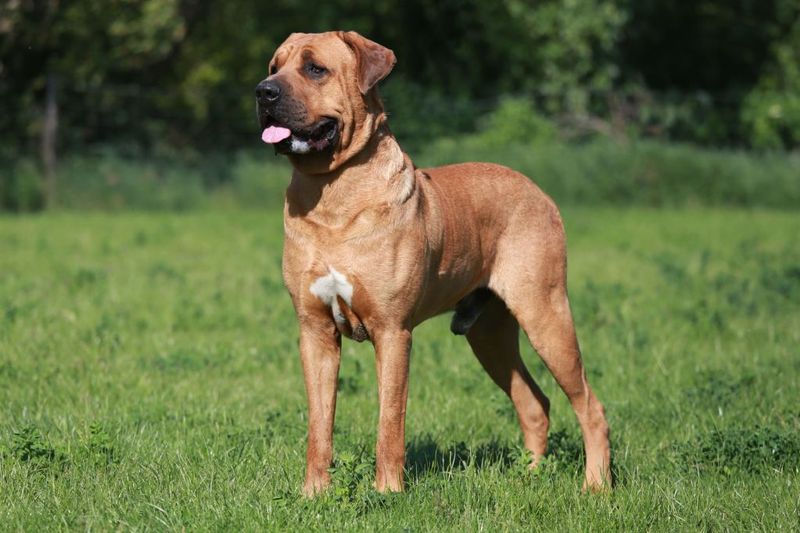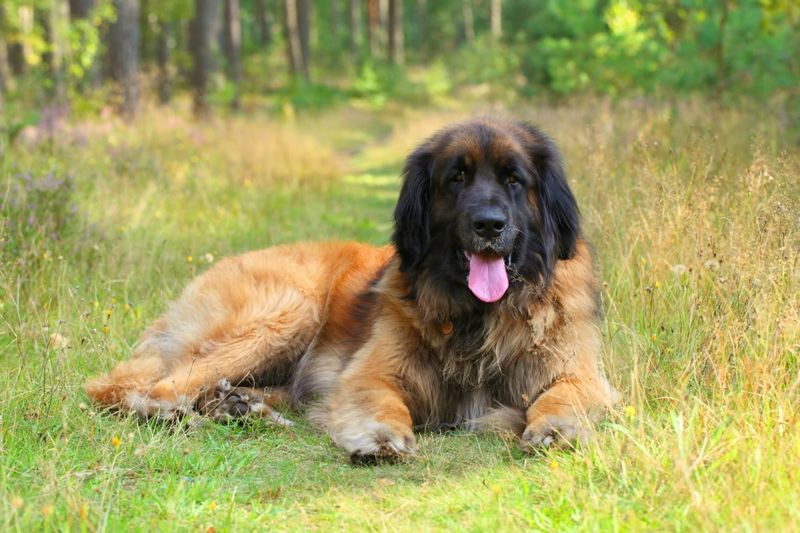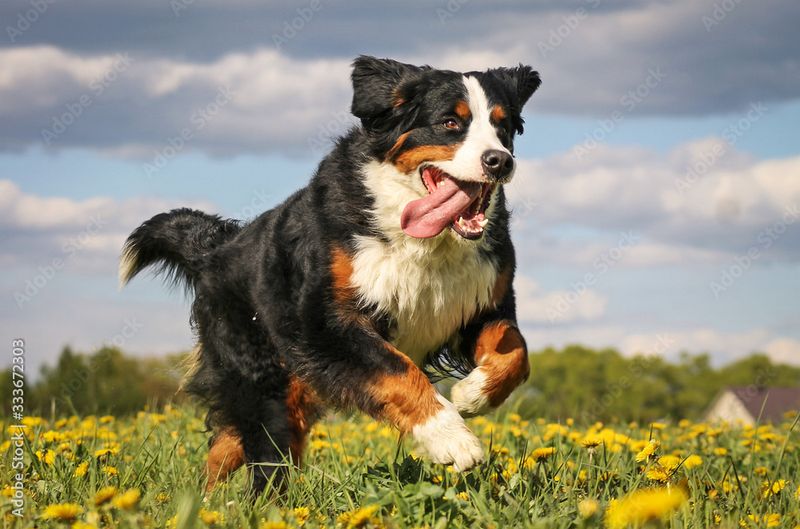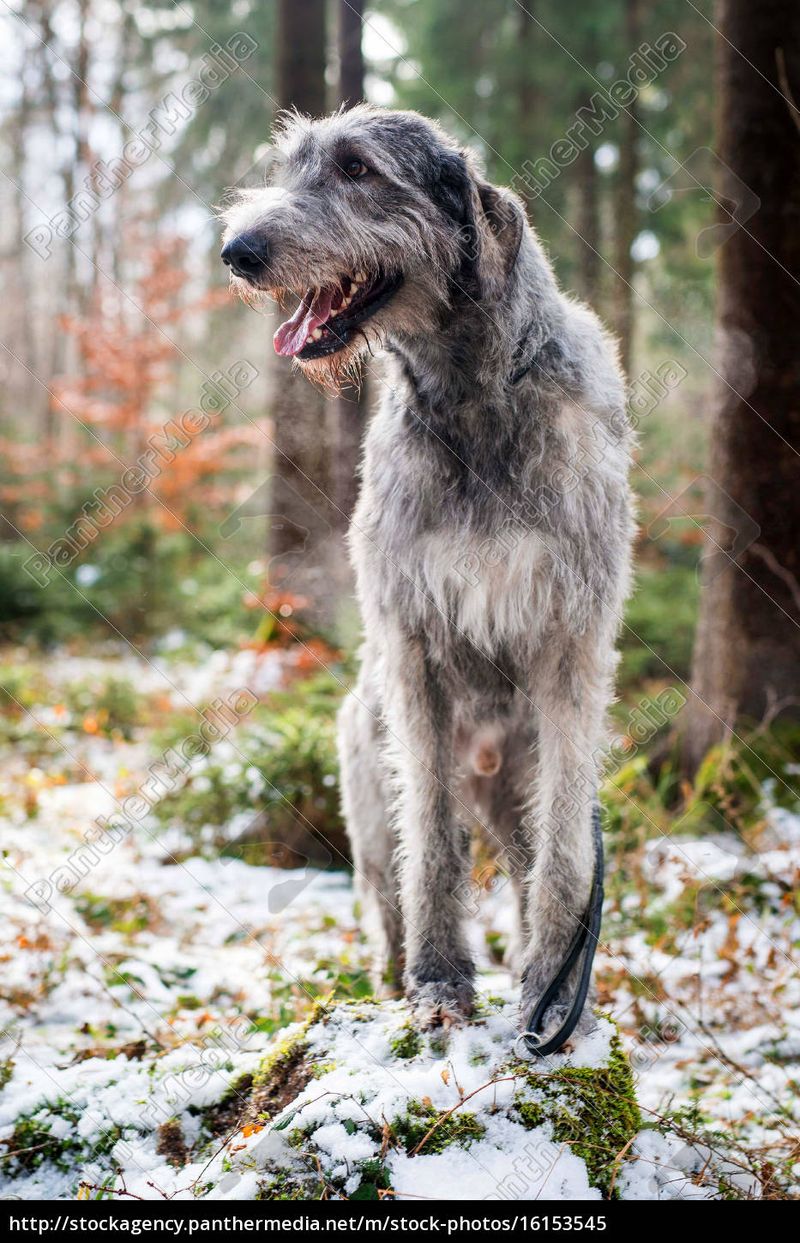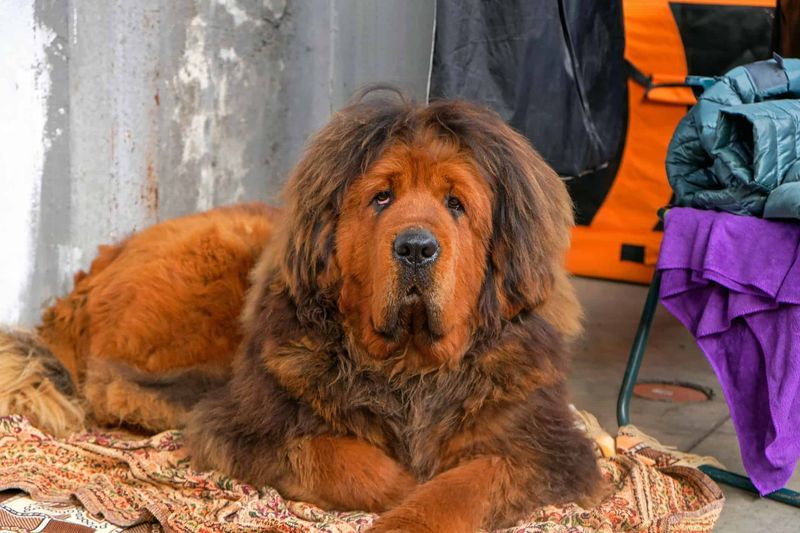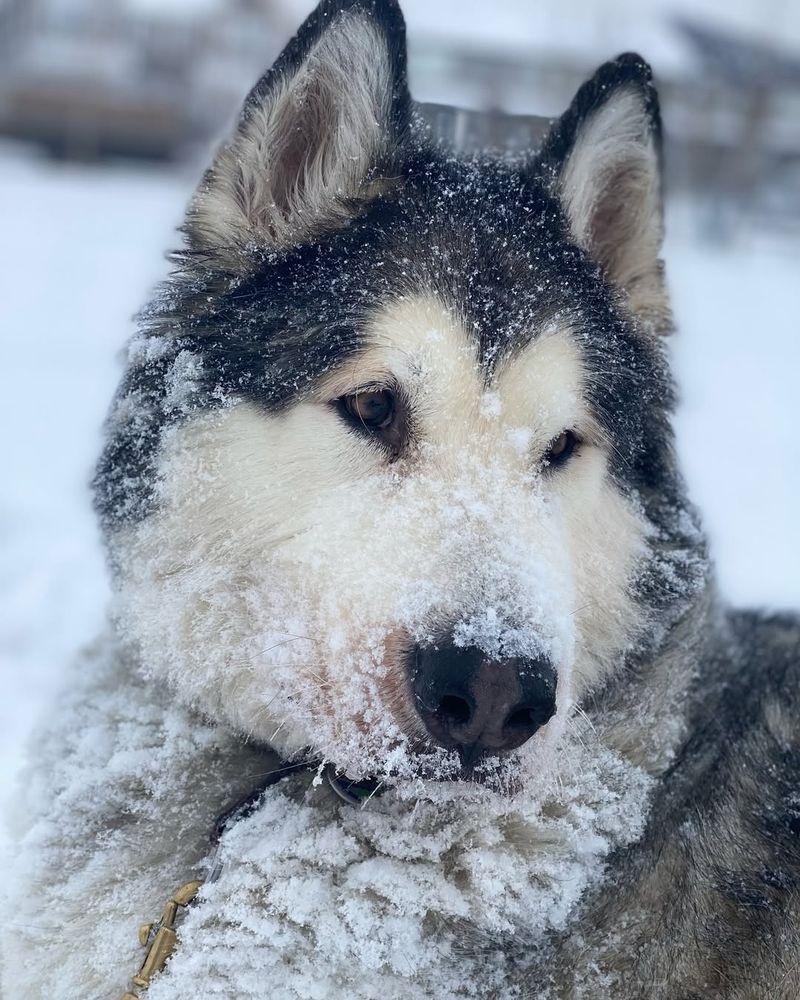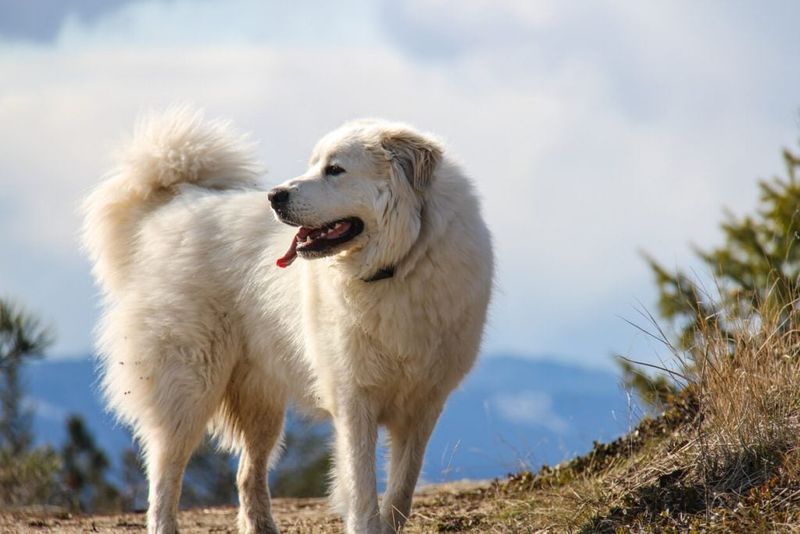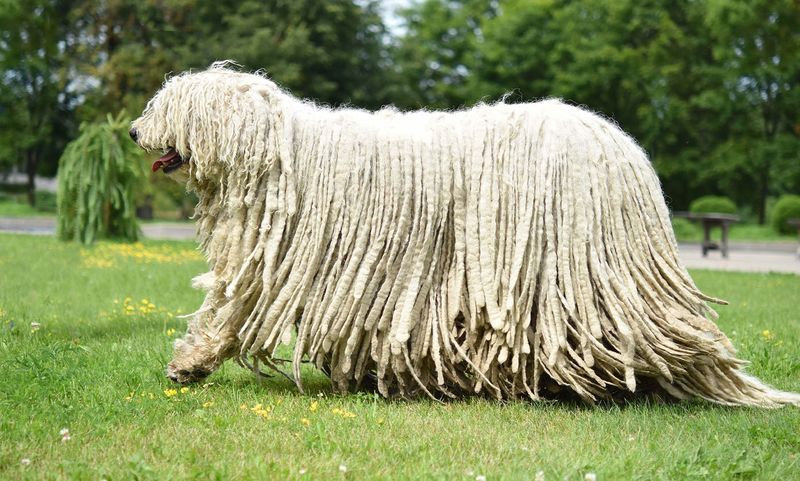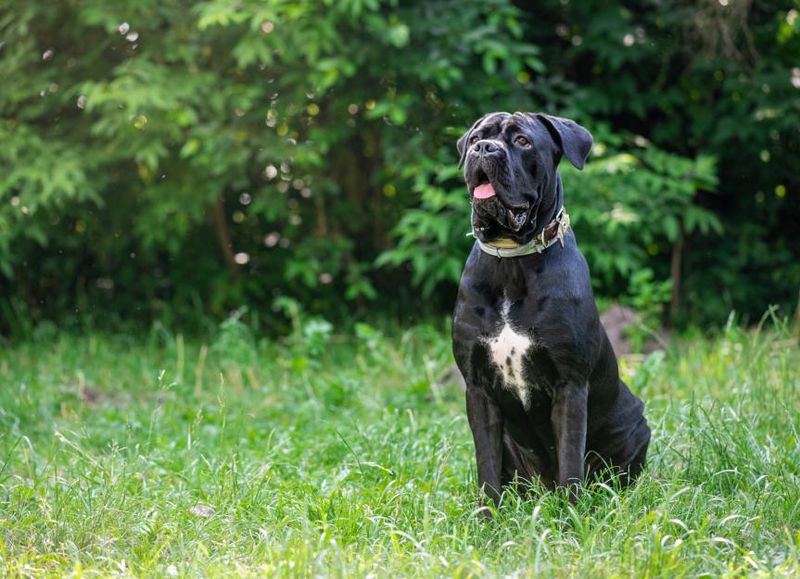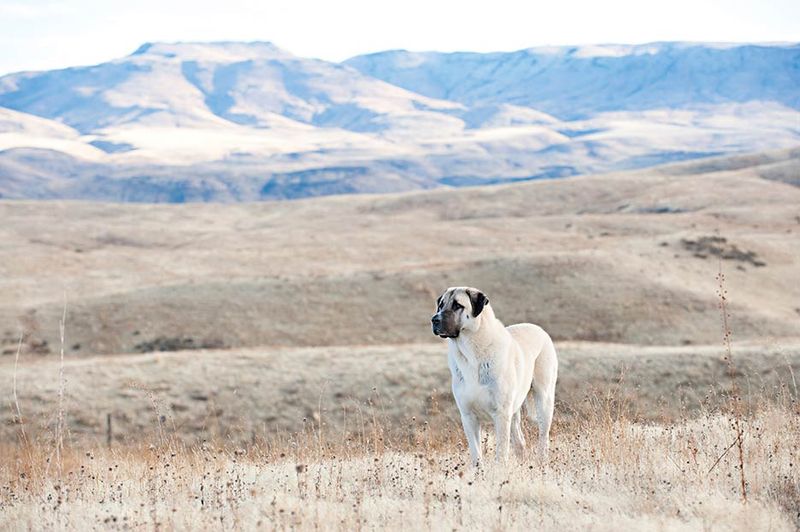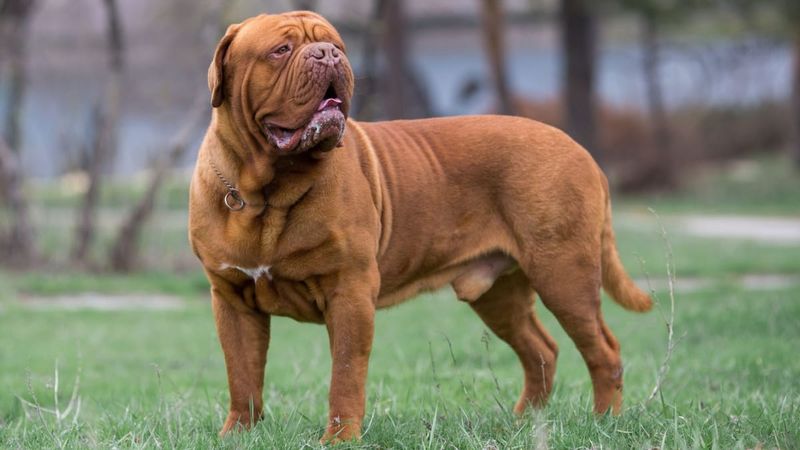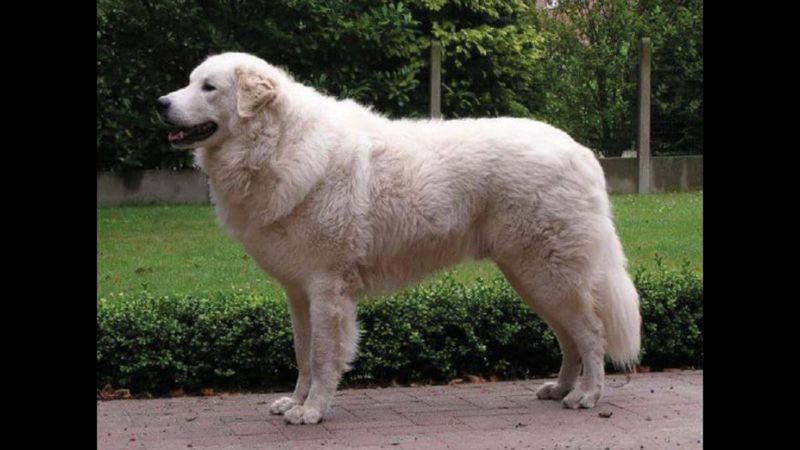In this blog post, we explore 16 of the most impressive and largest dog breeds that capture hearts with their size, strength, and surprisingly gentle natures. Each of these gentle giants has unique characteristics and needs. Whether you’re considering adopting a colossal canine or just curious about these magnificent creatures, you’ll find expert tips on how to raise them with love and care. From training to socialization, discover the joys and challenges of owning a mammoth dog breed.
Newfoundland
With a heart as big as its paws, the Newfoundland is every child’s gentle guardian. Its water-resistant coat and webbed feet make it a natural swimmer, often seen as the lifeguard of the canine world. When raising a Newfoundland, socialization is key.
These dogs thrive on companionship and become deeply bonded with families. Consistent training with positive reinforcement helps them become well-mannered adults. Despite their size, they adapt well to various living situations if exercised regularly.
Did you know? Newfoundlands once saved lives by pulling in drowning victims, highlighting their heroic nature.
Saint Bernard
Known for their iconic rescue missions in the Alps, Saint Bernards are gentle giants with a knack for caregiving. These dogs are affectionate and form strong bonds with their families. To raise a Saint Bernard, regular grooming is essential to maintain their lush coats.
Patience and consistency in training are crucial, given their independent streak. They’re great with children but supervision is advised due to their size.
Interesting tidbit: Saint Bernards historically carried barrels of brandy to aid lost travelers, although this charming image was a myth created by artists.
Great Dane
The Great Dane, often referred to as the “Apollo of dogs,” is a breed that commands attention with its towering stature. Despite their imposing size, these dogs are gentle and easygoing. When raising a Great Dane, focus on their diet and exercise to maintain healthy growth.
Training from a young age is vital, as their size can be overwhelming if not managed properly. Social interaction helps them remain friendly and well-adjusted.
Fun fact: Great Danes were originally bred to hunt wild boar, but today they’re more likely to be found gently lounging on the couch.
Mastiff
Mastiffs are the epitome of strength and loyalty, known for their protective instincts. They are gentle with family members but can be reserved with strangers. Raising a Mastiff involves early socialization and training to ensure they are well-mannered and confident.
Their large size requires space, so a spacious home or yard is ideal. Provide a balanced diet to keep them healthy and watch their weight, as they are prone to obesity.
Quirky fact: Mastiffs were once used as war dogs, showcasing their bravery and strength in historical battles.
Leonberger
Leonbergers are known for their majestic presence and friendly demeanor, often resembling lions with their impressive manes. These dogs are excellent with families and adore water activities. When raising a Leonberger, focus on socialization to encourage their friendly nature.
Grooming is important to maintain their beautiful coats, and regular exercise is needed to keep them fit and happy. They excel in dog sports like agility and obedience.
Did you know? The Leonberger was originally bred as a “symbolic dog” for European royalty, adding a regal touch to their history.
Bernese Mountain Dog
With their cheerful disposition and striking tri-colored coats, Bernese Mountain Dogs are a joy to behold. They thrive on human companionship and are known for their gentle, calm nature. To raise a Bernese, early socialization and obedience training are recommended.
These dogs love outdoor adventures and need regular exercise to stay healthy. Be prepared for shedding, as their thick coats require frequent grooming.
Historical note: Bernese Mountain Dogs were originally working dogs in the Swiss Alps, where they pulled carts and served as loyal companions to farmers.
Irish Wolfhound
The Irish Wolfhound, a gentle and dignified breed, is among the tallest of dogs. Despite their size, they are known for their calm and affectionate temperament. Raising an Irish Wolfhound involves providing ample space for them to roam and regular exercise to maintain their health.
Training should focus on positive reinforcement, as they respond well to gentle guidance. Their shaggy coats require regular grooming to prevent matting.
Intriguing fact: Irish Wolfhounds were historically used to hunt wolves, showcasing their strength and endurance, yet today, they are gentle family companions.
Tibetan Mastiff
Tibetan Mastiffs are known for their independence and protective nature, often resembling lions with their impressive size and mane-like fur. Raising a Tibetan Mastiff requires patience and firmness, as they can be stubborn.
Socialization from a young age is vital to ensure their friendliness with people and other pets. These dogs are best suited for families who appreciate their strong personalities and have experience with large breeds.
Did you know? Tibetan Mastiffs were traditionally used to guard livestock in the Himalayas, a testament to their loyalty and strength.
Alaskan Malamute
Alaskan Malamutes, with their powerful build and wolf-like appearance, are a testament to endurance and strength. These dogs are friendly and affectionate, thriving in active households. Raising an Alaskan Malamute involves regular exercise and mental stimulation.
Training should start early to harness their energy and ensure they are well-behaved. Their dense coats require frequent grooming, especially during shedding seasons.
Fun tidbit: Alaskan Malamutes were historically used to haul heavy freight as sled dogs, and their strength and resilience are still celebrated today.
Great Pyrenees
The Great Pyrenees, known for its majestic appearance and serene demeanor, is a guardian at heart. These dogs are gentle with family members and protective when necessary. Raising a Great Pyrenees involves providing plenty of space and regular exercise.
Early training and socialization are important to ensure they are comfortable with strangers. Their beautiful coats require regular grooming to maintain their condition.
Did you know? Great Pyrenees were once used to guard sheep in the Pyrenees mountains, a role they performed with unwavering dedication.
Komondor
The Komondor, with its distinctive corded coat, is a breed that captures attention wherever it goes. These dogs are dignified and loyal, often used as livestock guardians. Raising a Komondor requires early socialization and training to ensure they are well-adjusted.
Their unique coats need careful maintenance to prevent matting, and regular exercise is essential for their well-being. They thrive in environments where they have a job to do.
Quirky fact: The Komondor’s coat provides excellent protection against predators, making them ideal guardians for livestock.
Cane Corso
Cane Corsos are known for their intelligence and protective nature, making them excellent guardians. While they may appear intimidating, they are affectionate with family. Raising a Cane Corso involves firm, consistent training from a young age.
These dogs thrive on mental stimulation and need regular exercise to channel their energy. Socialization is key to ensure they are confident and well-behaved in various situations.
Interesting tidbit: Cane Corsos were historically used as guard dogs and hunters in Italy, showcasing their versatility and strength.
Anatolian Shepherd Dog
Anatolian Shepherd Dogs are revered for their independence and strong guarding instincts. These dogs are devoted to protecting livestock and family alike. Raising an Anatolian Shepherd requires a firm hand and consistent training.
They need space to roam and regular mental stimulation to prevent boredom. Socialization from a young age helps them become well-rounded companions.
Fun fact: Anatolian Shepherds have been guarding flocks for millennia, their history rooted deeply in the ancient lands of Turkey, highlighting their enduring loyalty and resilience.
Dogue de Bordeaux
The Dogue de Bordeaux, known for its massive head and expressive face, is a breed that embodies strength and tenderness. These dogs are calm and loyal, making them excellent family companions. Raising a Dogue de Bordeaux involves early socialization and gentle training.
They thrive in environments where they are part of the family and need regular exercise to maintain their health. Their short coats are easy to maintain but watch for drooling.
Historical note: Dogue de Bordeaux dogs have a rich history in France, once used to guard castles and bring down large game.
Kuvasz
Kuvasz dogs are admired for their striking appearance and protective instincts. Known for their loyalty, these dogs form strong bonds with their families. Raising a Kuvasz involves providing plenty of space and early socialization.
Consistent training helps them become well-behaved guardians, and regular exercise is needed to keep them healthy. Their beautiful coats require regular grooming to look their best.
Did you know? The Kuvasz has a noble history as a guardian of royalty in Hungary, reflecting their esteemed status and dedication.
Black Russian Terrier
The Black Russian Terrier, with its robust build and thick coat, is a breed designed to endure harsh conditions. These dogs are calm and confident, known for their protective nature. Raising a Black Russian Terrier involves early training and socialization.
They thrive on mental and physical challenges, requiring regular exercise and stimulation. Their coats need regular grooming to prevent matting.
Quirky fact: Black Russian Terriers were originally bred by the Soviet military, a testament to their strength and resilience in demanding environments.


